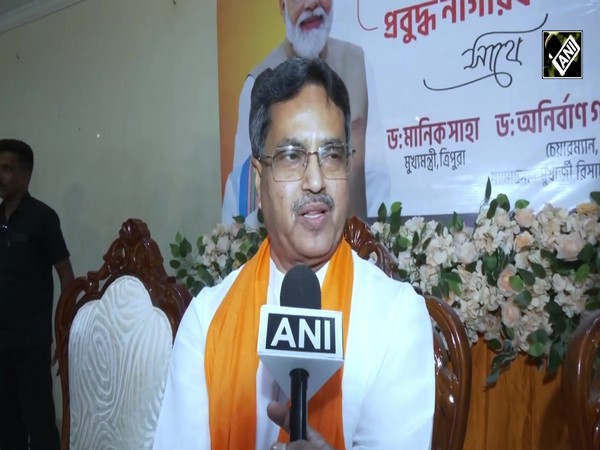Around 6 lakh people in Hyderabad may have been affected by SARS-CoV-2, says study based on sewage samples
Aug 20, 2020

Hyderabad (Telangana) [India], August 21 : Around 6 lakh people in Hyderabad, which includes symptomatic and asymptomatic patients and also recently recovered individuals, could have been infected by COVID-19 in 35 days, says a study released by Centre for Cellular and Molecular Biology (CCMB).
A CCMB press release said that individuals who are infected by SARS-CoV-2 shed virus not only through nasal and oral routes but also through faeces and it provides an opportunity to "use sewage/wastewater samples to estimate the spread of the infection in a given locality or area".
It said SARS-CoV-2 in sewage samples are non-infectious thus making sewage samples suitable for epidemiological studies.
Estimating the spread is very important in identifying the affected areas and controlling the pandemic.
The release said that since an infected person sheds viral material in faecal samples for up to 35 days, these studies will provide an overall estimate of the situation in a window of one month.
It said that of the 1800 million litres water used daily in Hyderabad, 40 per cent is processed at different sewage treatment plants (STPs).
CSIR-CCMB and CSIR-IICT harvested the sewage samples to estimate the number of potentially infected individuals in the city in a collaborative effort.
Sewage samples from major STPs were processed for detecting the presence of SARS-CoV-2 viral RNA.
"While viral RNA is detectable in the inlet samples, the outlet (after treatment) samples of STP were largely clean (free from viral RNA) in this regard, indicating efficient treatment practices at STP," the release said.
It said the study, which covered about 80 per cent of the STPs in Hyderabad, revealed that there are nearly 2 lakh people shedding viral materials.
"Since only 40 per cent of the Hyderabad sewage reaches STPs, this data can be used to extrapolate the overall number of potentially infected people, which turned out to be approximately 6 lakhs, that is, around 6 per cent of the city's population, which includes symptomatic, asymptomatic, and also recently recovered individuals in a time window of about 35 days," the release said.
The findings were posted on preprint server, MedRxiv, which is yet to be peer-reviewed.
"Our finding clearly indicates that a large proportion of the affected individuals are asymptomatic and did not need hospitalization. This is also in agreement with the observation that hospitalization rush or mortality is way lower than otherwise expected with such a large infection rates at a given time. It explains why our healthcare system has been able handle reasonably well the situation during the pandemic. Such studies if carried out in coordination with civic bodies to identify the hotspots in the city and monitor the dynamics of the infection rate can assist the system in taking necessary measures", Dr. Rakesh Mishra, Director, CCMB said.


















